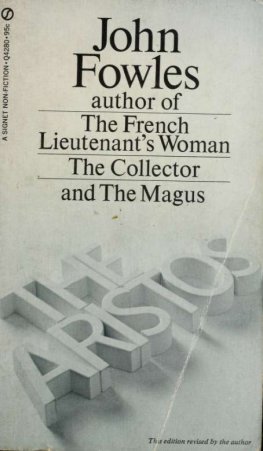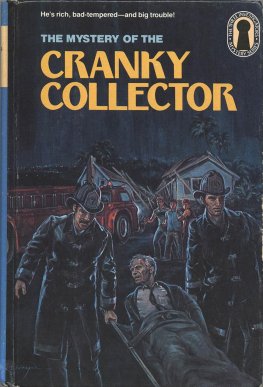Copyright 2014 David LeonHigdon
Published By David Leon Higdon atSmashwords
Kidnapping the Real: John Fowles TheCollector
Authorities place the number of kidnappings each yearin the world at 15,000 to 30,000 and classify them in four groups:kidnappings for money, kidnappings for politics, kidnappings formoney and politics, and kidnappings for neither money nor politics.In 1999, there were 1789 kidnappings for money (ransom) in theUnited Kingdom alone. In the Third World, children are oftenabducted and then sold into either labor or sexual slavery. The1970s and 1980s saw an explosion of political kidnappings in whicha person or a number of persons were hold hostage to try to forcesome political action such as release of incarcerated individuals,reversal of a policy. Often a political kidnapping is engineered toextort money for a cause. FARC and ELN in Columbia have quitesuccessfully used this tactic, as has the Abu Sayaf separatistgroup in the Philippines. Most authorities see the no money, nopolitics category as involving non-custodial parental kidnappingof their childrensome 354,000 children in the United States in1988but this category includes that small percentage ofkidnappings in which reasons or motivation is very ambiguous.Italys Red Brigade kidnapped, tried, and killed Aldo Moro, aformer premier, to disarticulate the workings of the bourgeoisstate without ever requesting a ransom or a change in publicaction. Unfortunately, the list of kidnapped individuals could beextended considerably, to Elizabeth Smart (held June 5, 2002 toMarch 12, 2003) or to Amanda Berry, Gina DeJesus, and MichelleKnight who were held captive for ten years by a retired school busdriver. Currently, we are transfixed with the kidnapping of sometwo to three hundred girls by extreme Islamists in Nigeria.
Take two infamous examples of kidnapping from thelast quarter of the twentieth century: Terry Anderson who was heldhostage in Lebanon for ambiguous political ends from March 16, 1985to December 4, 19912,454 days he reminds his readers in hisaccount of his ordealand Colleen Stan who was held hostage innorthern California from March 19, 1977 to August 9, 1984.Anderson, an Associated Press reporter stationed in Beirut andmistaken for a CIA agent, was taken hostage by 9mm pistol-wavingunshaven young men (Anderson 6) as he returned from his weeklytennis game early one morning, and for the next six and a halfyears was trunnelled, taped, chained, blindfolded, wrapped mummylike, and hauled around Beirut and environs from one location toanother as his captors attempted to trade his life for arms. He wasnot pleased to learn that the market price was set: One Americancitizen is worth 300 TOW antitank missiles, or 50 Hawks and 200TOWs (162). Blindfolded most of the time and kept sedentary forhours each day, Anderson fought the blankness by drawing on hismemories, by reading every scrap of print he could get, and bywriting in his secret diary. But to no avail. As he notes, the dayswere simply Hours, days, nights, weeks. Blank nights. Gray dawnafter gray dawn (67). He repeatedly became depressed, as hopeafter hope was squashed. The depression is enormous, a thick,black blanket smothering me. I cant even begin to think. Despiteall our caution, all our effort not to believe anything good wouldhappen immediately, we really did believe it. At least, I find nowthat I did. To face again the knowledge that it will be weeks,months before theres even a chance of movement, a chance offreedom for one of us, is just too much. I cant do it (154). Hiscaptivity, however, could have been even worse. His captors didspeak some English; they did allow radio and televisionoccasionally; and one to three other hostages shared his room muchof the time. Anderson knew why he had been kidnapped; he often knewwhat his captors wanted to use him for; and he had hopes ofeventual successful closure. Knowing that he was part of worldpolitical action gave some meaning to his situation.
Colleen Stan was far less fortunate, because hercaptor had no political motivation or agenda: he was simply asexual psychopath desiring to explore the boundaries where bondageand discipline became true sadomachoism. On the day she wasabducted outside Red Bluff, California, Colleen Stan washitchhiking from Eugene, Oregon to Westwood, California. Herinitial experience almost replicates Andersons in that she wasforced to the floor of the vehicle, threatened with death, andtaken to a dark cell-like room. Over the next seven years, CameronHooker, her abductor, would hang her from a beam, place her on hisrack, or post her against his St. Andrews Cross and whip her,often to unconsciousness, or shock her with electric wires, or holdflames to her breasts, or rape her with dildos or himself. She wasvariously kept roped, taped, gagged, or chained, and her sensorydeprivation far, far exceeded that of Anderson, because Hooker hadconstructed a head boxa plywood box, carpeted on the inside anddesigned to fit over ones head. As Stans attorney described it,it was the claustrophobes nightmare come true: It shut out alllight. It muffled all sound. It pinched her neck, trapping herthick hair tightly against her nape, the stranglehold heighteningher terror. The carpeted interior pressed against her face with asickening closeness, and her breathing turned to gasps (McGuire9). Even worse, at night Stan was placed in a box within a box,locked in, and pushed under Hookers waterbed frame. Eventually,Stan helped Hooker build an underground room where he hoped toconfine at least four women for his depraved pleasures (248). Thephysical treatment, coupled with Hookers story of an organizationspecializing in sexual slavery, reduced Stan to absolutedependency, stripping her of her identity completely and renamingher simply K. All the while, Hooker was leading this secret life(secret to everyone but his wife); his neighbors perceived him asbeing nice, courteous, quiet, friendly, a really niceguy (46), and just another hard-working employee of the arealumber mill.
When during the last week of November 1960(Journal 452), John Fowles decided to write a novelexploring the psychodynamics of kidnapping, he had a wealth ofmaterial to which he could turn for framing his story. Westernculture could have contributed from any number of angles. He couldhave turned to folkloric materials such as Beauty and the Beast orBluebeard. (He indeed did turn to Bluebeard as we shall see.) Hecould have turned to mythic materials of Pluto and Proserpine oreven Jupiter and Ganymede. Or he could have turned to the historyof the British novel and drawn on Clarissa and TheMonk. Then, too, he could have looked no further than thenewspaper accounts of kidnappings. He chose the latter. Fowleskidnapped the story of John Bridal and Marjorie Jordan from thepages of London newspapers.
While discussing The Collector with RoyNewquist during a 1963 interview, Fowles identified two sources ofinspiration for his novel. Some time during the 1950s, he toldNewquist, I went to see the first performance in London ofBartks opera, DukeBluebeards Castle. It wasnt avery good performance, but the thing that struck me was thesymbolism of the man imprisoning women underground (219). He thenidentified a second and, until now, unspecified source of fargreater importance: It so happened that about a year later therewas an extraordinary case (again in London) of a boy who captured agirl and imprisoned her in an air-raid shelter at the end of hisgarden. She could have gotten away earlier than she did, but shewasif not mentally deficientnot very bright. In the end she didescape, but there were many peculiar features about this case thatfascinated me. And, eventually, it led me to the book. Some timein the 1950s may now be pinpointed as January 8, 1957, the boyand girl identified as John Raymond Bridal and Marjorie SylviaJordan, and the extraordinary case recalled as one of Londonsmore bizarre kidnappings. Identification of this source insistentlyreveals just how close to the newspaper page and the thriller genreFowles was before inspiration struck and transformed two ordinary,even dull, people into the binaries of an existential parable. Thedistance between Fowles sources and his characters is great. Itenables us to see just how creative Fowles actually was in thisnovel and allows a very clear look at the transformative processearly in Fowles career as a newspaper oddityevolved into apowerful, multilayered novel which Fowles would variously call aparable (Newquist 218), a kind of fable (Halpern 36), and acasebook (Campbell 456).
Next page










